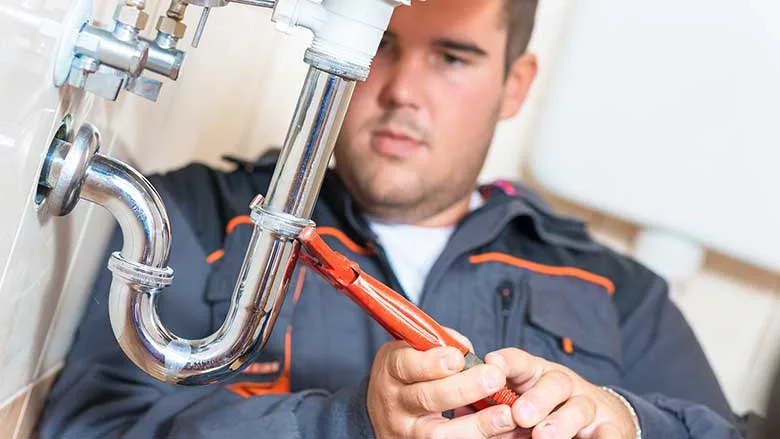Garrett Wilson: Promoting technology in the plumbing field
Attract the next generation of plumbers and new customers by highlighting new tech.

Image courtesy of GregorBister / E+ / via Getty Images
As anyone in the profession knows, the plumbing industry is rapidly changing. Demand for plumbing services is reaching unprecedented levels, but so too is competition.
Technology is also transforming the way in which plumbing companies market their services and the way in which plumbers go about doing what they do — from diagnosing problems and repairing broken fixtures to installing water, gas and other piping systems in homes and businesses.
Against this backdrop, plumbing companies are finding themselves dealing with a marked labor shortage. While there are currently more than half-a-million plumbers in the U.S., it is an aging workforce that is having trouble attracting younger workers. Spurred by COVID-19, plumbers are retiring at a far greater rate than apprentices are replacing them. Only 17% of high school and college students say they want to work in the construction trades, compared to 77% who want to work in technology.
Given that focus on technology, marketing the wide range of tech advances currently being used by plumbers would seem to be an obvious way to attract a generation raised on video games and the Internet to the profession. That, of course, means overcoming the old image of a plumber crawling under a sink with a trusty wrench in hand to educate this potential workforce about the tech innovations that have become an essential part of the industry’s toolbox. This includes everything from the use of GPS and high-definition drain cameras to sound-based leak detection devices and trenchless technology.
Technology has also become an instrumental part of customer relations for most plumbing companies. Few young people (or even older consumers who haven’t needed a plumber for a while) recognize that most plumbers are now equipped with mobile devices or tablets to visually explain potential problems and how they plan to address them. Like so much of today’s business world, plumbers are using electronic communications to send messages to customers and employees, schedule appointments, deliver invoices and receive payments. Some companies are even employing video conferencing to consult with customers before dispatching a plumber to the scene.
Finally, the increasing focus on green energy is prompting more plumbers to offer customers a range of energy-efficient options, including tankless water heaters, solar water heating systems, water-saving showerheads and faucets, and low-flow toilets. In addition, many plumbing companies are responding to consumer demands for all-online communications by shifting to paperless billing.
Given this increasing reliance on technology, the question that remains for many plumbing firms today is how can they best leverage these innovations to improve customer relations, attract new customers and increase the number of younger, tech-savvy workers entering the industry?
Given that focus on technology, marketing the wide range of tech advances currently being used by plumbers would seem to be an obvious way to attract a generation raised on video games and the Internet to the profession.
Starting on the consumer side, social media is providing an unparalleled means for plumbers’ work to be positively (or negatively) showcased via applications like Yelp, Foursquare and Angi. Plumbing companies are increasingly posting the ratings provided by these apps, along with customer testimonials and photos of recently completed projects, on their own websites and social media channels. Websites are also being employed to provide answers to frequently asked plumbing questions and how-to blogs or videos so that consumers can educate themselves on relatively simple plumbing fixes. Photos and videos also offer an opportunity to feature visual examples of the plumbing technology now being employed.
Marketing to younger individuals who potentially might consider a career in plumbing is a little trickier. Somewhat older consumers usually find themselves encountering plumbers when a specific need presents itself. To generate interest among high school students and other potential workers, though, plumbing companies first have to get their attention.
Because GenZers generally are tech-savvy, plumbers can assume they spend a fair amount of time on social media. TikTok, for example, is the most downloaded app in the world, with almost 60% of its users between the ages of 16 and 24. Placing very brief but informative videos on such apps can begin to acquaint users with some of the tech tools being used by plumbers today.
Plumbing firms can also use more traditional methods to get in front of students and young adults, including recruiting during high school career days, making plumbing training programs available in high schools and working with trade schools to offer scholarships and apprenticeships. Some companies are also shortening the length of training to get younger in the field and earn money faster.
All of this outreach offers a chance for plumbing companies to promote the benefits the profession offers, such as steady work with ample overtime opportunities and highly competitive wages. For a generation for which college degrees no longer represent a ticket to success, entry into a profession boasting good pay and a high demand for young workers offers a very viable alternative. Add to that the expense of college — which costs 40% of a family’s income, on average and sees nearly half of all students graduating with debt in excess of $22,000 — and the plumbing profession looks very lucrative, indeed.
For a plumbing industry in flux, technology — coupled with a healthy dose of reality — could very well be the key ingredient in attracting a new generation of workers, as well as a wider customer base that is increasingly focused on green energy and communicating digitally.
Looking for a reprint of this article?
From high-res PDFs to custom plaques, order your copy today!






